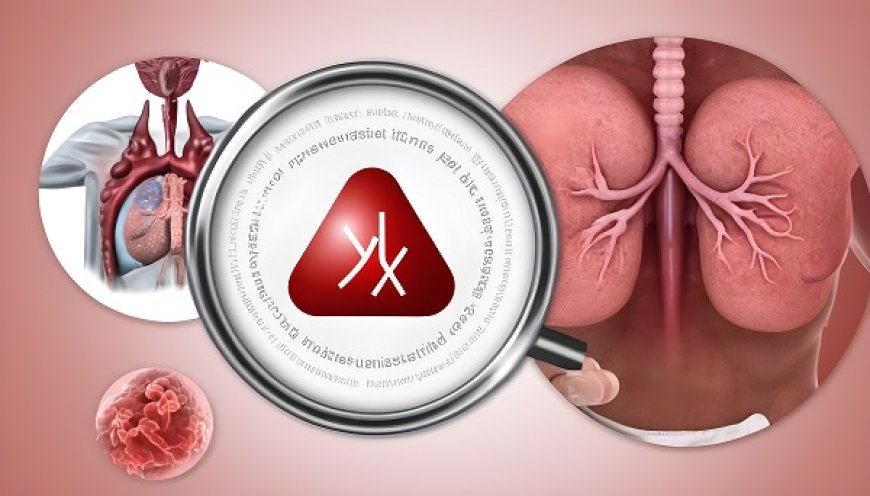Tips to Reduce the Risks of Sexually Transmitted Diseases.
Preventing sexually transmitted diseases (STDs) is crucial for maintaining sexual and overall health. To reduce the risks of these diseases, it is advisable to follow several important tips, such as adhering to proper use of protection methods like condoms, ensuring the sexual partner's safety, and undergoing regular screenings. Education about STDs and their transmission methods is also recommended, along with avoiding unsafe sexual practices. By following these tips, it is possible to limit the spread of diseases and preserve the sexual and overall health of individuals and communities.

Preventing sexually transmitted diseases (STDs) is crucial for maintaining sexual and overall health. To reduce the risks of these diseases, it is advisable to follow several important tips, such as adhering to proper use of protection methods like condoms, ensuring the sexual partner's safety, and undergoing regular screenings. Education about STDs and their transmission methods is also recommended, along with avoiding unsafe sexual practices. By following these tips, it is possible to limit the spread of diseases and preserve the sexual and overall health of individuals and communities.
Tips to Reduce the Risks of Sexually Transmitted Diseases
The importance of preventing sexually transmitted diseases (STDs) extends beyond individual sexual health to the overall health of communities. By raising awareness about the importance of prevention and providing necessary guidance, the spread of these diseases can be reduced, along with associated health complications.
Prevention involves using protective measures such as condoms correctly during every sexual encounter and undergoing regular screenings for early detection of any potential infections. It also includes educating about prevention methods and safe sexual practices, and encouraging individuals to make healthy decisions in selecting sexual partners.
In addition to individual health benefits, preventing sexually transmitted diseases leads to a reduction in the health and economic burdens on society as a whole by decreasing the number of new cases and reducing healthcare costs associated with treatment.
Therefore, prevention of sexually transmitted diseases is essential for maintaining sexual health, preventing serious diseases, and promoting public health and well-being in communities.
Proper use of protective measures
Proper use of protective measures is essential in preventing sexually transmitted diseases (STDs) and maintaining sexual health. This primarily includes correctly and appropriately using condoms during every sexual encounter, as they are an effective means of reducing infection transmission between sexual partners.
To ensure the effectiveness of condoms, individuals should follow proper usage guidelines, such as checking expiration dates and storing condoms correctly. Additionally, it is important to use only one condom per sexual encounter and avoid using them with other protective methods simultaneously to prevent tearing or damage.
In addition to condoms, there are other protective measures such as contraceptive pills and hormonal barriers, which should be used after consulting with a healthcare provider. Individuals should also educate themselves about available protective methods and how to use them correctly.
By relying on the proper use of protective measures, individuals can significantly reduce the risk of contracting sexually transmitted diseases, thereby improving their overall sexual and general health.
Early detection of diseases and reducing spread
Early detection of sexually transmitted diseases (STDs) plays a crucial role in preventing their spread and reducing the negative impacts on public and individual health. Through early detection, STDs can be diagnosed in their early stages and appropriate treatment can be promptly administered, thereby preventing their spread to others.
Encouraging individuals to undergo regular screenings for STDs is an essential part of comprehensive prevention. These screenings can accurately and quickly identify infections, allowing for immediate treatment initiation and prevention of infection transmission to others.
Furthermore, early detection can contribute to guiding health and educational programs more effectively, directing efforts towards populations most vulnerable to infection and providing them with the necessary support and resources.
Overall, early detection of sexually transmitted diseases is a key strategy in preventing their spread and significantly contributes to promoting public health and individual prevention efforts.
Reducing risk through safe partnerships
Reducing risk through safe partnerships is an essential part of the strategy for preventing sexually transmitted diseases (STDs). Safe partnerships include several important elements aimed at reducing infection transmission and protecting individuals and their sexual partners.
In the context of safe partnerships, individuals should choose reliable sexual partners and commit to exclusive partnerships. Through this, the chances of exposure to infection can be significantly reduced, as the number of sexual contacts is minimized, and regular testing is conducted to detect any potential infections.
Additionally, safe partnerships involve mutual agreement between partners to use protective measures such as condoms during every sexual encounter. This practice enhances protection and reduces the likelihood of infection transmission between individuals.
Thus, it can be said that safe partnerships play a crucial role in reducing the risk of sexually transmitted diseases, promoting sexual and overall health for individuals and communities.
Education and awareness
Education and awareness are essential components in efforts to prevent sexually transmitted diseases (STDs). Education aims to increase knowledge and understanding about STDs, as well as prevention methods, among individuals and communities.
Through education, awareness can be raised about the importance of using protective measures such as condoms and undergoing regular screenings for early detection of infections. It can also promote awareness about the importance of choosing sexual partners carefully and avoiding risky sexual practices.
Efforts in education and awareness include conducting awareness campaigns, workshops, and educational seminars about STDs, as well as providing educational resources such as printed materials, websites, and other informative materials.
Thanks to education and awareness, individuals' behaviors can be changed, and safe sex practices can be increased, thereby contributing to reducing the spread of sexually transmitted diseases and improving sexual health for individuals and communities overall.
Safe sexual practices
Safe sexual practices are an essential part of the strategy for preventing sexually transmitted diseases (STDs) and maintaining sexual health. These practices involve several important factors that contribute to reducing the risk of infection transmission and promoting overall sexual health.
Firstly, enjoying safe sexual practices includes using protective measures such as condoms correctly and consistently during every sexual encounter. Proper condom use can protect against sexually transmitted diseases and reduce the risk of unplanned pregnancy.
Secondly, safe sexual practices involve carefully choosing sexual partners and avoiding risky sexual behaviors such as unprotected intercourse with unknown partners. By maintaining safe and stable sexual partnerships, the transmission of infection can be significantly reduced.
By utilizing safe and responsible sexual practices, individuals can enjoy a healthy and safe sexual life while simultaneously reducing the spread of sexually transmitted diseases and protecting their own and their partners' sexual health.
Treatment and counseling
Treatment and counseling play an important role in efforts to prevent sexually transmitted diseases (STDs). Treatment involves providing necessary healthcare to individuals infected with sexually transmitted infections, including prescribing necessary treatments to control the infection and reduce its transmission to others.
Additionally, treatment may involve providing health counseling and guidance to patients on how to avoid transmitting the infection to others and offering advice on safe sexual practices.
Meanwhile, counseling sessions can provide information and education about sexually transmitted diseases, including their causes, symptoms, and prevention methods. These sessions can also offer psychological and emotional support to individuals affected by sexually transmitted infections.
Overall, treatment and counseling play a vital role in reducing the spread of sexually transmitted diseases and promoting health awareness, thereby improving sexual and overall health for individuals and communities.
Summary
Preventive tips for sexually transmitted diseases include a range of measures and practices that can be followed to reduce the risk of infection transmission and protect sexual health. This includes using protective measures like condoms correctly during every sexual encounter, undergoing regular screenings for early detection of infections, carefully choosing sexual partners, and avoiding risky sexual practices. Additionally, education and counseling play a crucial role in increasing awareness about sexually transmitted diseases and promoting safe sexual practices. Providing treatment and support for individuals infected with sexually transmitted infections contributes to controlling their spread and improving sexual healthcare. Therefore, implementing these tips contributes to preventing sexually transmitted diseases and safeguarding the sexual health of individuals and communities.
sources
1. World Health Organization (WHO)
2. Centers for Disease Control and Prevention (CDC)
3. International Federation of Red Cross and Red Crescent Societies
4. American Sexual Health Association
What's Your Reaction?



































































































































































